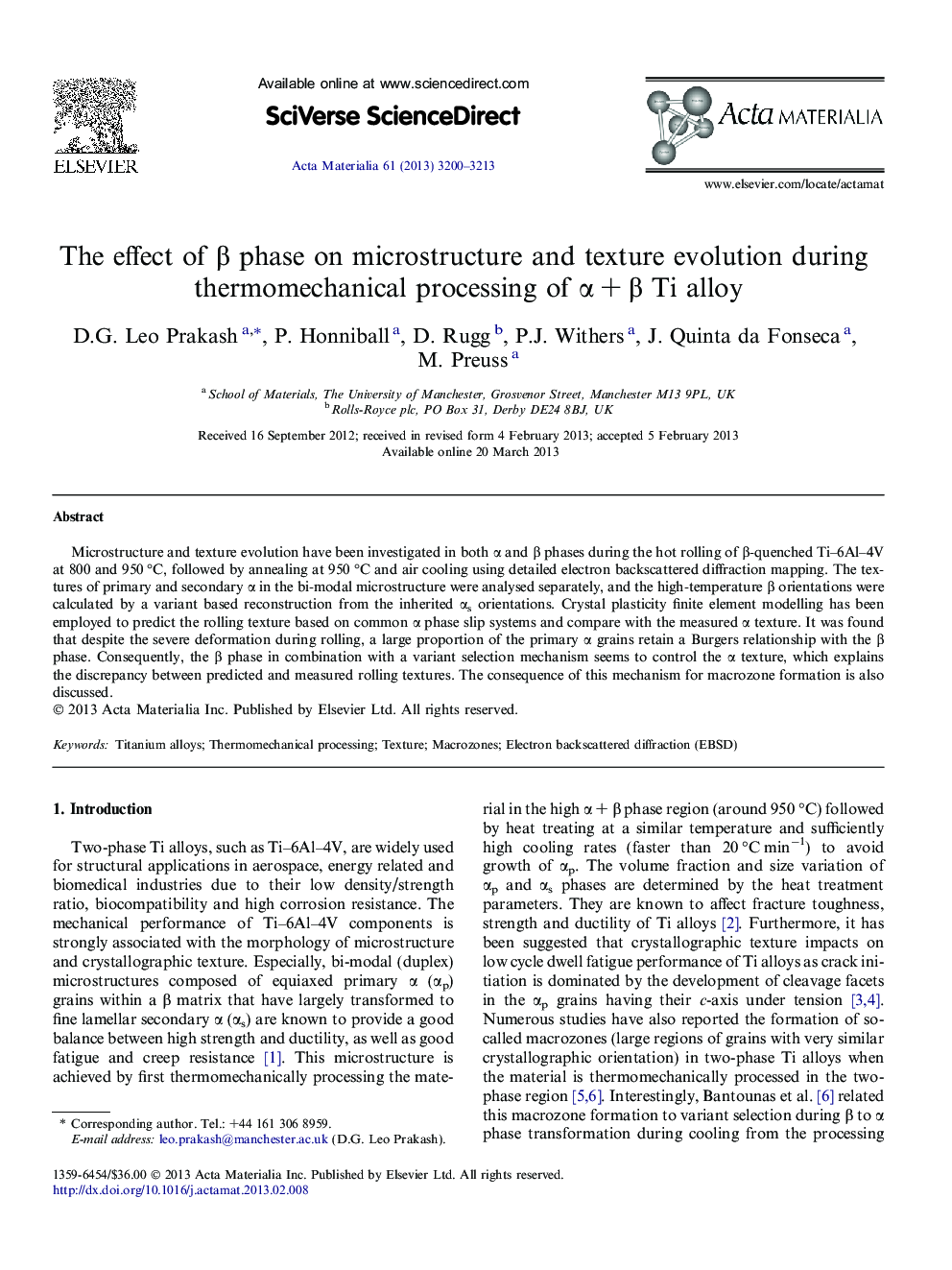| Article ID | Journal | Published Year | Pages | File Type |
|---|---|---|---|---|
| 1446380 | Acta Materialia | 2013 | 14 Pages |
Microstructure and texture evolution have been investigated in both α and β phases during the hot rolling of β-quenched Ti–6Al–4V at 800 and 950 °C, followed by annealing at 950 °C and air cooling using detailed electron backscattered diffraction mapping. The textures of primary and secondary α in the bi-modal microstructure were analysed separately, and the high-temperature β orientations were calculated by a variant based reconstruction from the inherited αs orientations. Crystal plasticity finite element modelling has been employed to predict the rolling texture based on common α phase slip systems and compare with the measured α texture. It was found that despite the severe deformation during rolling, a large proportion of the primary α grains retain a Burgers relationship with the β phase. Consequently, the β phase in combination with a variant selection mechanism seems to control the α texture, which explains the discrepancy between predicted and measured rolling textures. The consequence of this mechanism for macrozone formation is also discussed.
